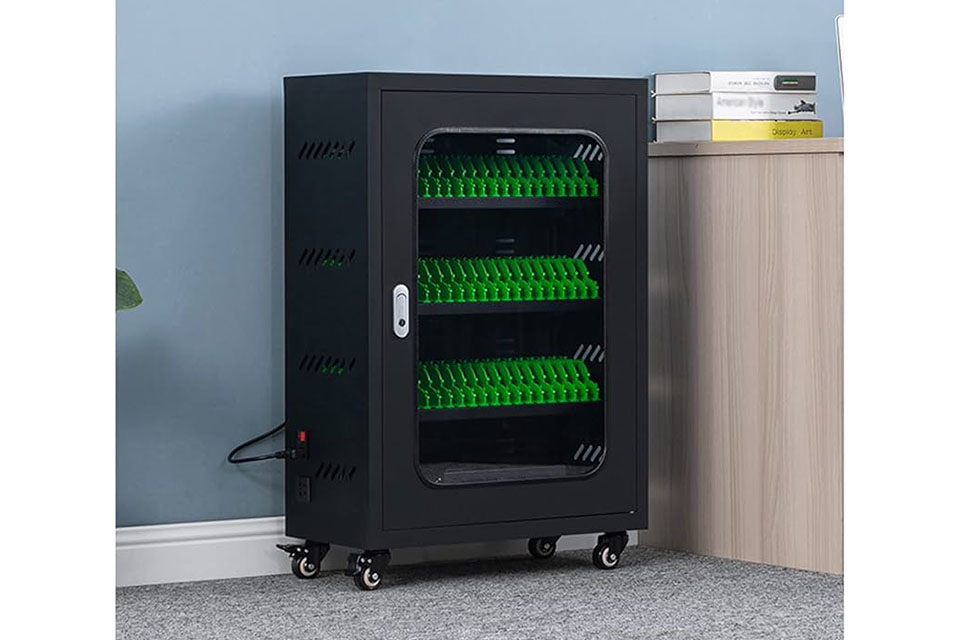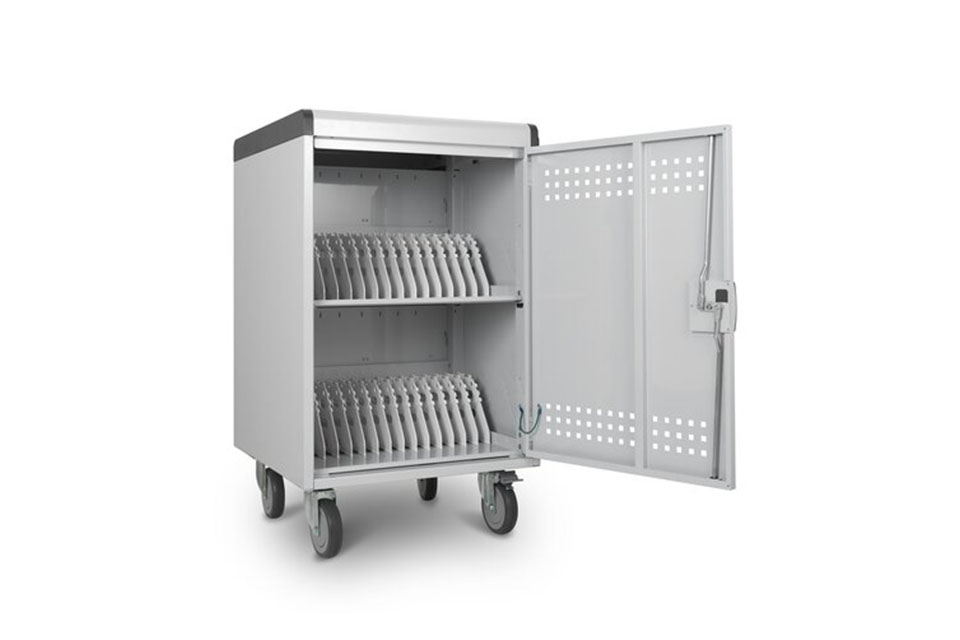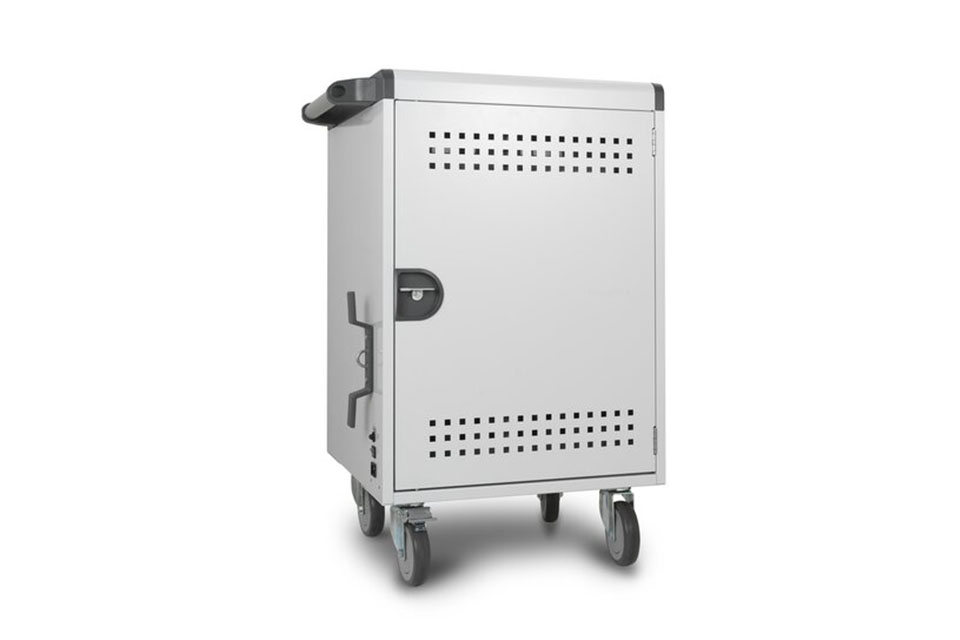Future Trends in Device Charging Why Cabinets Will Lead the Way
Summary
Future Trends in Device Charging: Why Cabinets Will Lead the Way The future of device charging is increasingly characterized by innovations that prioritize efficiency, convenience, and sustainability. Among the most notable developments are charging cabinets, which have emerged as vital tools for managing and powering multiple electronic devices across various sectors, including education, healthcare, and corporate environments. These cabinets not only streamline the charging process but also address the growing demand for organized and safe storage solutions, reflecting a significant shift in how devices are charged and maintained in the modern digital landscape.
As the prevalence of mobile devices continues to rise, so does the necessity for efficient charging solutions that accommodate various gadgets simultaneously. Charging cabinets are designed with built-in power outlets and USB ports, allowing for the centralized charging of tablets, laptops, and smartphones, thereby optimizing space and enhancing user experience. Their compact and scalable designs make them adaptable to diverse settings, further increasing their relevance in environments where multiple devices need to be managed and charged at once, such as schools and workplaces.
The integration of smart technologies and eco-friendly features into charging cabinets is transforming them into sophisticated energy management solutions. With advancements like smart grid compatibility, IoT capabilities for real-time monitoring, and energy-efficient designs, these cabinets promote sustainability by minimizing energy waste and extending battery lifespans. Furthermore, the growing consumer preference for environmentally responsible products is driving the adoption of such solutions, positioning charging cabinets at the forefront of the device charging industry.
Despite their advantages, the charging cabinet market faces challenges, including high initial costs and the need for regulatory clarity. However, as manufacturers innovate to create customizable and user-friendly options, the market for charging cabinets is projected to experience robust growth, driven by the expanding needs of businesses and institutions. With a projected compound annual growth rate (CAGR) of 24.4% from 2025 to 2032, the evolution of charging cabinets signifies a pivotal shift in the landscape of device charging solutions, addressing both user demands and environmental concerns in the process.
Overview of Device Charging Technologies
Device charging technologies have evolved significantly, offering a variety of methods for powering electronic devices. These innovations aim to enhance user convenience, efficiency, and accessibility.
Smart Grid Integration
The future of device charging is increasingly intertwined with smart grid technology. Smart grids enhance the efficiency and reliability of charging infrastructure for electric vehicles, enabling dynamic energy management and seamless integration with renewable energy sources. This integration is vital for accommodating the rising demand for electric vehicles and optimizing energy distribution across the grid.
Wireless Charging
Wireless charging is a prominent technology that enables the charging of devices without physical connections. It operates through electromagnetic induction, wherein a charging station generates an electromagnetic field that induces a current in a compatible receiver coil embedded in the device. This method is increasingly utilized in smartphones, smartwatches, earbuds, and electric vehicles, providing a hassle-free charging experience without the need for cables. The technology is still developing, with potential applications in medical devices and IoT systems expanding its relevance in modern life.
Conductive Charging
Despite not being a true wireless technology, conductive charging is gaining traction as an effective method for powering consumer electronics and low-energy devices. This approach involves the use of charging boards or surfaces that directly transfer power to devices, making it suitable for applications in various environments, including homes and workplaces. US-based startup FLI Charge is at the forefront, developing conductive modules and powered surfaces that can integrate with various battery-operated devices, allowing for simultaneous and rapid charging of multiple gadgets.
Fast Charging Technologies
Fast charging has transformed the charging landscape by significantly reducing the time needed to charge devices. Innovations such as USB Power Delivery (USB-PD) and Qualcomm Quick Charge utilize higher wattage outputs and intelligent power management systems to optimize the charging process. These technologies ensure safety and compatibility across various devices while allowing for quick recharging, catering to the needs of modern consumers who demand efficiency and convenience.
The Emergence of Charging Cabinets
Charging cabinets, also known as charging stations or carts, have become essential tools in various sectors due to their ability to manage and charge multiple electronic devices simultaneously. Designed to accommodate a range of devices including tablets, laptops, Chromebooks, and smartphones, these cabinets feature built-in power outlets and USB ports, enhancing their functionality in educational institutions and corporate environments alike.
Benefits of Charging Cabinets
Space Optimization and Scalability
One of the key advantages of charging cabinets is their compact design, which allows them to fit seamlessly into different environments while maximizing available space. These cabinets come in various sizes, making them suitable for small businesses, large enterprises, and educational institutions. For instance, a school with a large fleet of tablets can centralize device storage and charging, ensuring that all devices are charged and ready at the start of the day, which significantly reduces downtime for both students and teachers.
Enhanced Device Management
Charging cabinets facilitate efficient device management. In educational settings, they provide a systematic way to store and charge devices used for digital learning. This not only ensures that devices are always available but also reduces the risk of damage caused by improper handling. For healthcare facilities, the ability to securely store and charge critical devices enhances patient care and record management, making these cabinets invaluable.
Environmental and Economic Benefits
With smart charging features that prevent overcharging, modern charging cabinets promote sustainability by reducing energy consumption. The eco-friendly aspect of these cabinets aligns with global sustainability goals, as they lower the carbon footprint associated with charging multiple devices. Furthermore, the long-term affordability of these solutions stems from their ability to prolong battery life, which in turn means fewer replacements and lower maintenance costs.
Market Trends and Adoption
The market for charging solutions, particularly Shared Charging Treasure Cabinets, is experiencing significant growth driven by various trends and evolving consumer preferences. Key factors contributing to this expansion include the rise of remote work, the adoption of hybrid office models, and increased mobile device usage across multiple sectors such as healthcare, education, and government.
Key Drivers of Market Growth
Technological Advancements
Technological innovations play a crucial role in shaping the charging cabinet market. Features such as wireless charging, solar-powered units, and IoT integration have become increasingly important, driving manufacturers to enhance their product offerings. Over 58% of market insights focus on these innovations, reflecting their critical influence on user preferences and industry dynamics.
Customization and User Experience
Manufacturers are increasingly prioritizing customization options to meet diverse client needs, ranging from size and capacity to security features and branding. Furthermore, the focus on ergonomics and user-friendly designs has grown, improving overall satisfaction and adoption rates among consumers. This emphasis on tailored solutions allows companies to cater effectively to specific sectors, notably educational institutions, which are currently the dominant segment in the market.
Geographic Expansion
The market is witnessing substantial geographic expansion, particularly in rapidly developing economies in the Asia-Pacific region. This growth is attributed to rising technology adoption and significant investments in infrastructure. North America and Europe also maintain a significant market share due to high laptop penetration rates and advanced infrastructure, yet the Asia-Pacific region is projected to exhibit the highest growth rates in the coming years.
Consumer Behavior and Preferences
Emerging consumer trends indicate a shift towards environmentally sustainable and energy-efficient solutions. As organizations increasingly adopt bring-your-own-device (BYOD) policies, there is a growing need for charging solutions that can accommodate a wide variety of devices. The demand for smart, customizable, and secure charging cabinets reflects broader trends in digital transformation and workplace modernization.
Additionally, insights from stakeholders highlight that over 72% of data collected in recent reports focus on end-user behavior trends, capturing the adoption rates in various settings, including transportation hubs and educational institutions. This information is vital for understanding market dynamics and tailoring strategies to meet consumer expectations.
Future Outlook
The global market for Shared Charging Treasure Cabinets is anticipated to experience a compound annual growth rate (CAGR) of 24.4% from 2025 to 2032, with projections estimating its value to reach USD 172.17 billion by 2032. As the market continues to evolve, manufacturers are expected to adapt by integrating cloud-based management systems, improving security features, and enhancing modular designs that support scalability and flexibility, ultimately catering to the increasing demands of consumers and institutions alike.
Innovations and Technological Advancements
The device charging cabinet industry is experiencing rapid advancements driven by technological innovation and changing consumer needs. Industry leaders are focusing on developing smart charging technologies, which are central to improving energy efficiency and user experience in various environments, including educational institutions and corporate settings. These innovations include intelligent power management systems that optimize energy consumption, ensuring that devices are charged efficiently while preventing overcharging.
Smart Charging Technologies
Smart charging solutions are at the forefront of innovation within the industry, integrating Internet of Things (IoT) capabilities to allow for real-time monitoring and predictive maintenance. These features enable users to manage charging sessions remotely, providing enhanced operational efficiency and security. Moreover, the inclusion of modular configurations offers flexibility, allowing systems to adapt to different charging needs and configurations over time.
Eco-Friendly Solutions
In response to growing environmental concerns, manufacturers are also innovating in the realm of sustainable design. New charging cabinets are being equipped with eco-friendly features, such as solar power integration and energy-efficient designs, which align with global sustainability goals. This trend is increasingly relevant as organizations seek solutions that minimize their carbon footprints while still delivering high-quality performance.
Fast Charging Capabilities
Fast charging technologies have emerged as a key area of focus, especially in settings where time is of the essence. Innovations in this domain cater to the demand for quick and reliable power solutions, ensuring that users can maintain productivity without interruptions. This trend is particularly beneficial in environments where multiple devices need to be charged simultaneously, allowing for quick turn-around times.
Advanced User Interfaces
User-friendly interfaces are also being prioritized in the design of modern charging cabinets. Many new models feature touchscreens and mobile app control, enabling users to easily manage and monitor charging processes. These advancements not only enhance the user experience but also promote efficient energy use by allowing for scheduling and tracking of energy consumption.
Through these technological advancements and innovations, the device charging cabinet industry is poised to lead the way in providing efficient, sustainable, and user-centric charging solutions that meet the evolving demands of consumers and businesses alike.
Challenges and Limitations
Technical and Operational Challenges
The deployment of energy storage systems (ESS) for device charging faces significant technical and operational hurdles. Key challenges include battery performance, lifespan, and safety concerns, which necessitate advanced research and development in battery chemistries and thermal management systems. Additionally, integrating ESS with existing grid infrastructure and efficiently managing energy flows is crucial, which can be addressed through smart grid technologies and sophisticated energy management systems.
Policy and Regulatory Barriers
High initial investment costs are a primary barrier to the widespread adoption of energy storage systems. The substantial expenses associated with advanced battery technologies, installation, and integration can deter potential users. While costs are gradually decreasing due to technological advancements and economies of scale, financial incentives, subsidies, and innovative financing models, such as leasing or power purchase agreements, are essential to alleviate this burden.
Inconsistent policies and a lack of standardized regulations also complicate the deployment of ESS. Bureaucratic hurdles can lead to project delays and increased costs. Collaboration among governments, industry stakeholders, and regulatory bodies is vital for establishing supportive policies and streamlined permitting processes, which can facilitate the integration of ESS into charging infrastructure.
Constraints Handling in Optimization
When optimizing the deployment of energy storage systems, constraints handling is essential. Nonlinear constraints inherent in the optimization problem must be addressed through techniques such as penalty functions and feasibility-based rules to ensure that updated solutions comply with imposed limits. Key constraints include energy storage limits, where the charging power must not exceed the maximum capacity of the battery storage system (BSS), and discharge power limitations, which should adhere to the BSS's maximum discharge capacity. These considerations ensure that the energy stored within the BSS remains within its minimum and maximum state of charge limits, promoting effective and safe operations.
Iteration and Termination Criteria
The iterative nature of optimizing energy storage systems means that movement, interaction, and update steps are repeated until a termination condition is met. These conditions can vary, including reaching a maximum number of iterations or satisfying specific convergence criteria based on predefined metrics. This iterative process is crucial for refining solutions and overcoming the various challenges presented by energy storage integration.
Case Studies
Optimization in Microgrid Management
The exploration of optimization strategies within microgrid ((\mathbf{\Omega})) management has led to a formulation of various case studies aimed at identifying the best energy management (EM) strategies to achieve specific operational goals. The studies focus on both multi-objective and single-objective functions, where the key aim is to minimize total operational costs, maximize profits of battery storage systems (BSS), and reduce emissions from the (\mathbf{\Omega}).
Case Study 1: Economic Dispatch
The first case study investigates the implementation of economic dispatch strategies to minimize total operational costs while simultaneously maximizing the profits derived from the BSS. This involves optimizing various factors such as load scheduling, renewable energy generation, energy storage utilization, and grid interaction. The goal is to establish a balanced approach that effectively reduces expenses while enhancing the financial returns of the BSS.
Case Study 2: Emission Reduction
In the second case study, the primary focus shifts to minimizing emissions produced by the (\mathbf{\mathcal{C}}). This approach emphasizes environmental sustainability, aiming to develop EM strategies that prioritize reducing greenhouse gas (GHG) emissions, thereby contributing to broader climate goals.
Case Study 3: Multi-Objective Optimization
The third case study amalgamates the objectives of the previous two, aiming to implement EM strategies that decrease total operational costs, enhance BSS profits, and reduce overall emissions from the (\mathbf{\mathcal{C}}). This model takes into account the trade-offs and synergies between these competing objectives, striving for a solution that aligns economic benefits with environmental sustainability. The krill herd algorithm (KHA) is utilized in this case to identify optimal solutions while navigating various nonlinear constraints that may arise in the optimization process.
Methodology and Challenges
The studies highlight the importance of constraints handling in optimization. Nonlinear constraints are integral to the problem and must be managed effectively using various techniques such as penalty functions and feasibility-based rules. Iterative methods ensure that solutions converge satisfactorily, meeting predefined termination criteria.
By focusing on these diverse case studies, the research aims to enhance the operational efficiency of microgrids, illustrating the potential for significant cost savings and reduced environmental impact through optimized EM strategies.
Future Directions
As the demand for efficient and sustainable charging solutions continues to grow, several key trends are shaping the future of device charging, particularly through the use of advanced charging cabinets and electric vehicle (EV) infrastructure.
Proliferation of Ultra-Fast Charging Stations
The development of ultra-fast charging stations is expected to revolutionize the EV market, making it more appealing to consumers by significantly reducing charging times. These stations will leverage breakthroughs in battery technology and charging protocols, allowing a full charge in mere minutes. Such advancements will not only enhance user convenience but also contribute to the wider adoption of electric vehicles in urban environments.
Integration with Renewable Energy Sources
Future charging solutions are anticipated to increasingly incorporate renewable energy sources, such as solar and wind. This integration aligns with global sustainability goals, providing eco-friendly charging options that complement the growing electric vehicle market. By utilizing green energy, charging cabinets can further enhance their appeal to environmentally conscious consumers and businesses.
Smart Charging Technology
Advanced charging cabinets are now equipped with smart charging technology that optimizes charging speeds and prevents overcharging, thereby extending the lifespan of devices. These innovations are critical for businesses seeking to reduce downtime and enhance operational efficiency. The adoption of intelligent power management systems, including algorithms that monitor battery health and adjust charging rates, will further advance the reliability of charging solutions.
Customer Experience and Engagement
The implementation of charging solutions within retail environments, such as cell phone charging kiosks, has been shown to significantly enhance the customer experience. By addressing common pain points, retailers can foster customer loyalty and satisfaction, thereby influencing purchasing behavior. As consumer preferences evolve, businesses will need to ensure that charging stations are not only functional but also user-friendly and aesthetically pleasing.
Modular and Flexible Charging Solutions
To address the dynamic demands of the market, future charging infrastructures are expected to embrace modular and flexible designs. This approach will facilitate easy upgrades and expansions, allowing businesses to adapt their charging capabilities to changing user needs and technological advancements. By investing in versatile charging solutions, companies can better prepare for the future of charging and device management.
 Mobile Charging Cabinets: Power on the Go for Exhibitions and Concerts
Mobile Charging Cabinets: Power on the Go for Exhibitions and Concerts
 How Charging Cabinets Improve Attendee Experience at Conferences
How Charging Cabinets Improve Attendee Experience at Conferences
 Declutter Your Office: The Role of Charging Cabinets in Modern Workspaces
Declutter Your Office: The Role of Charging Cabinets in Modern Workspaces

